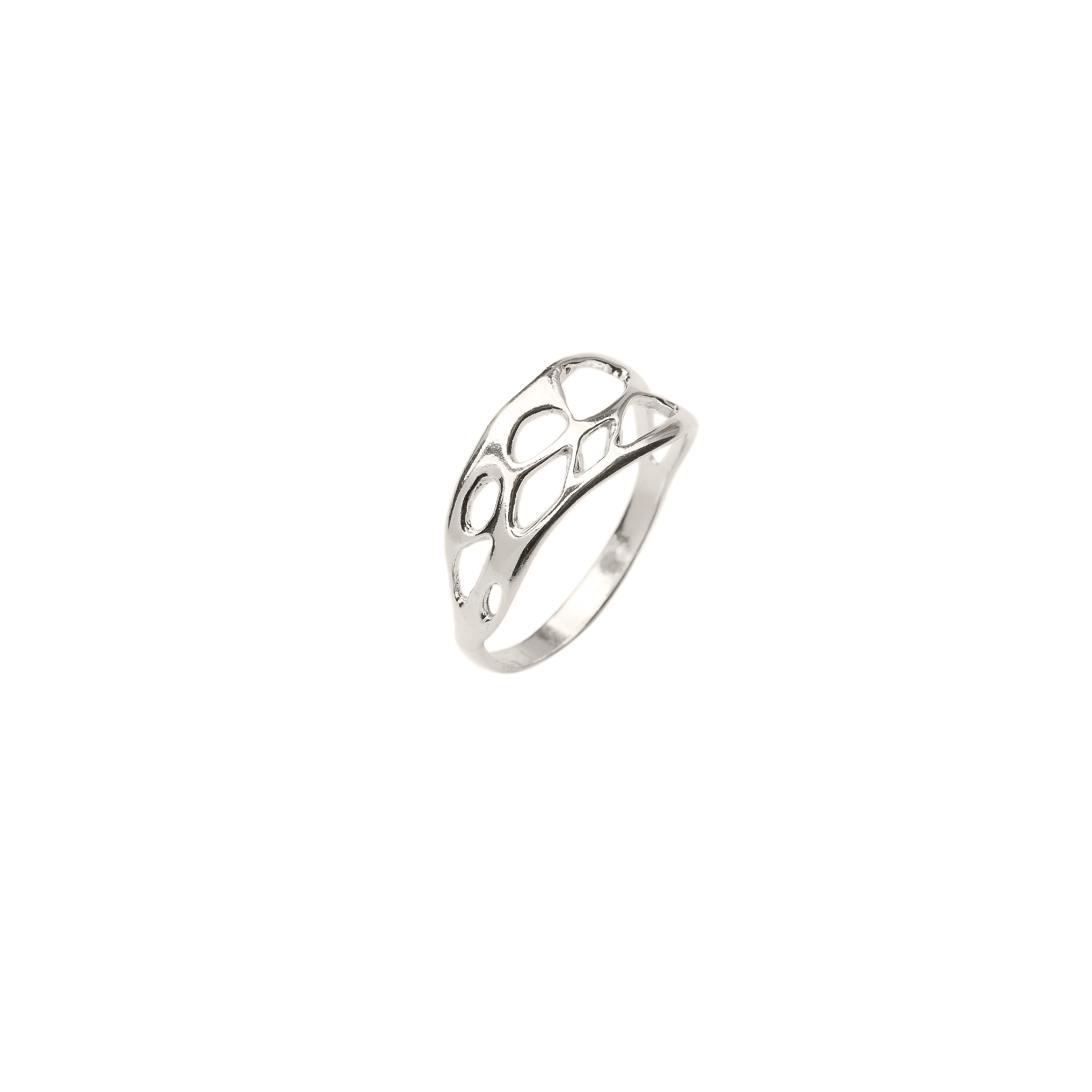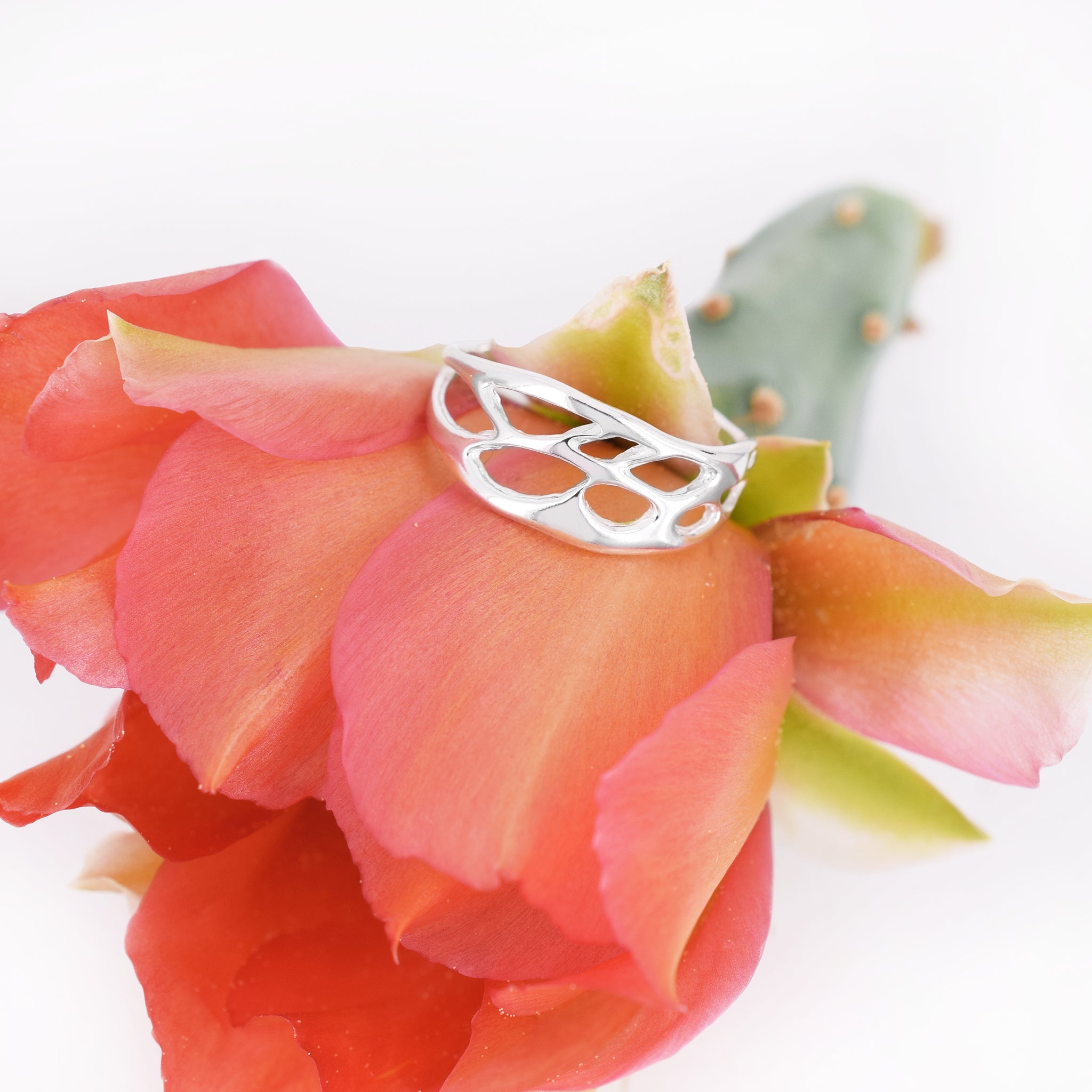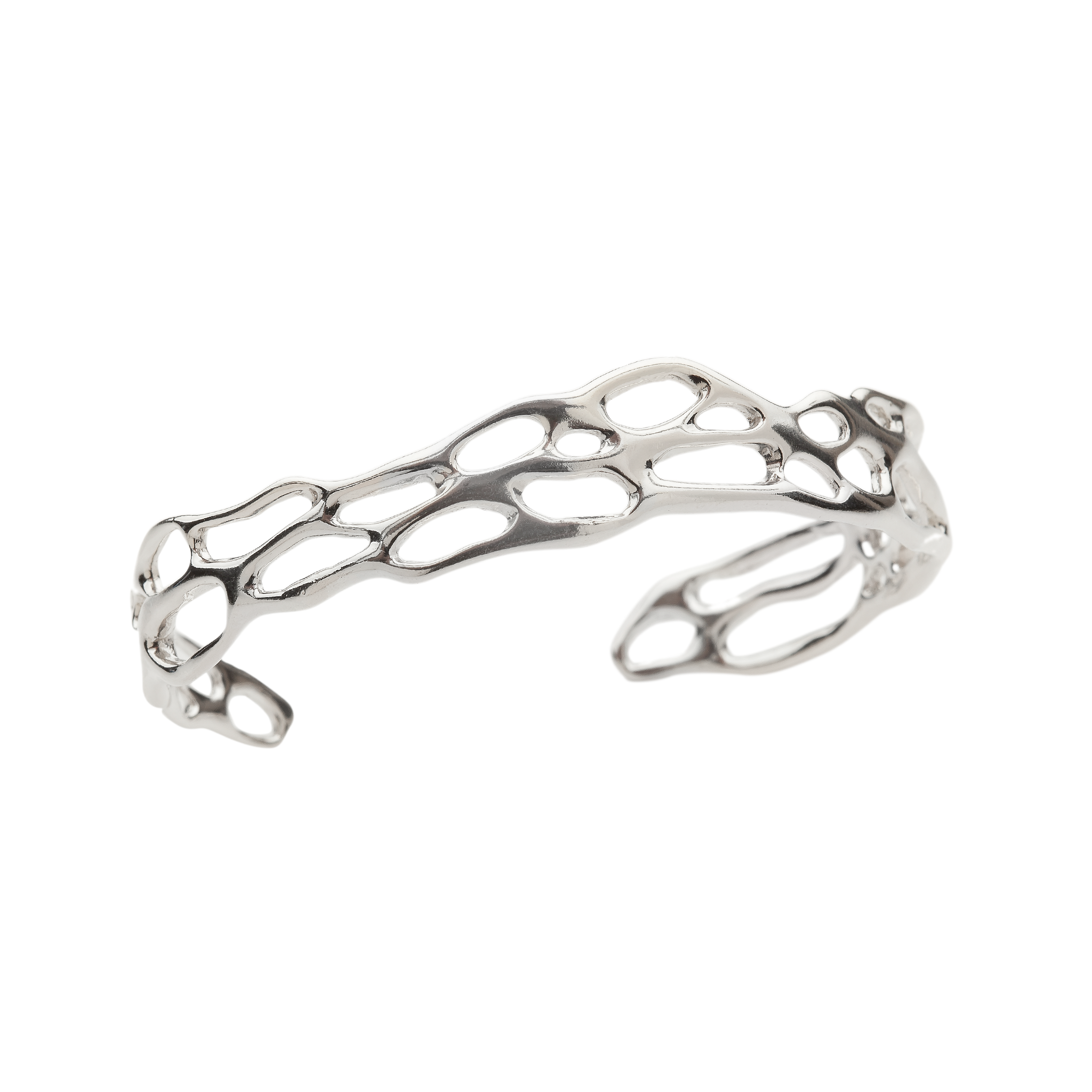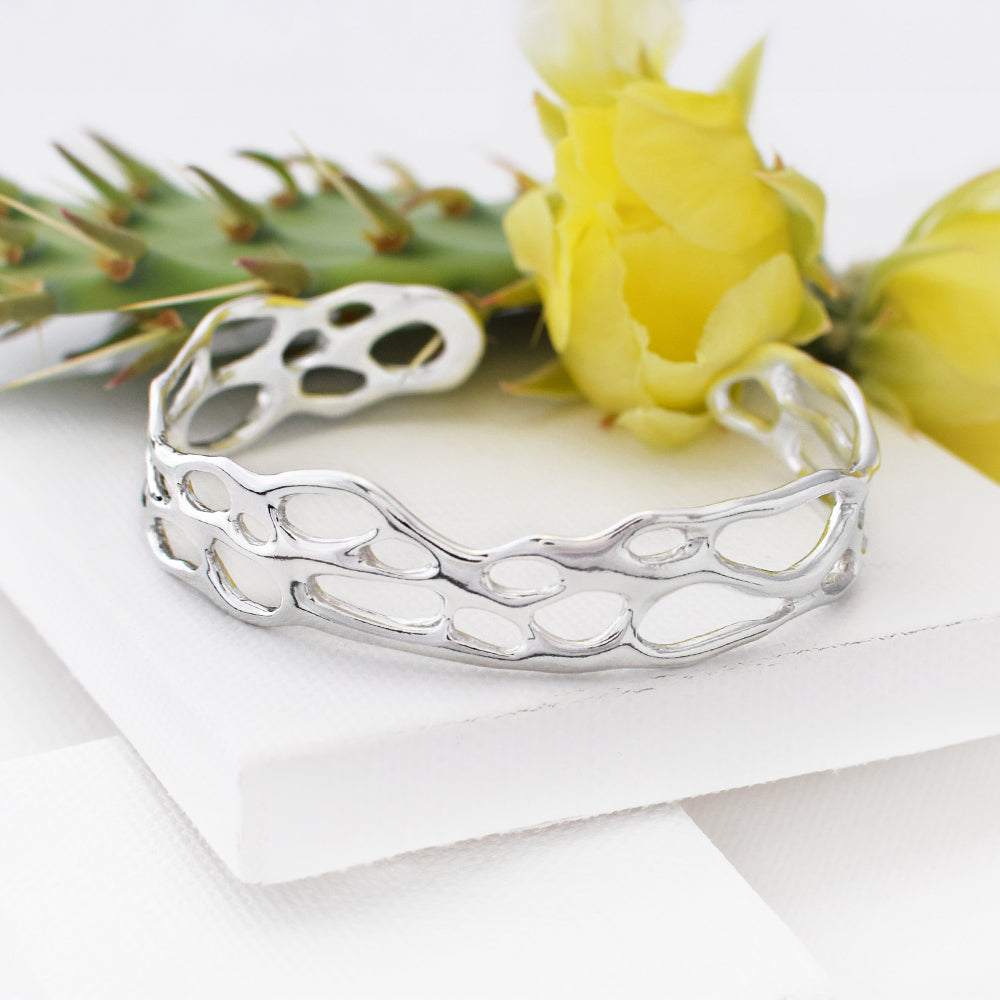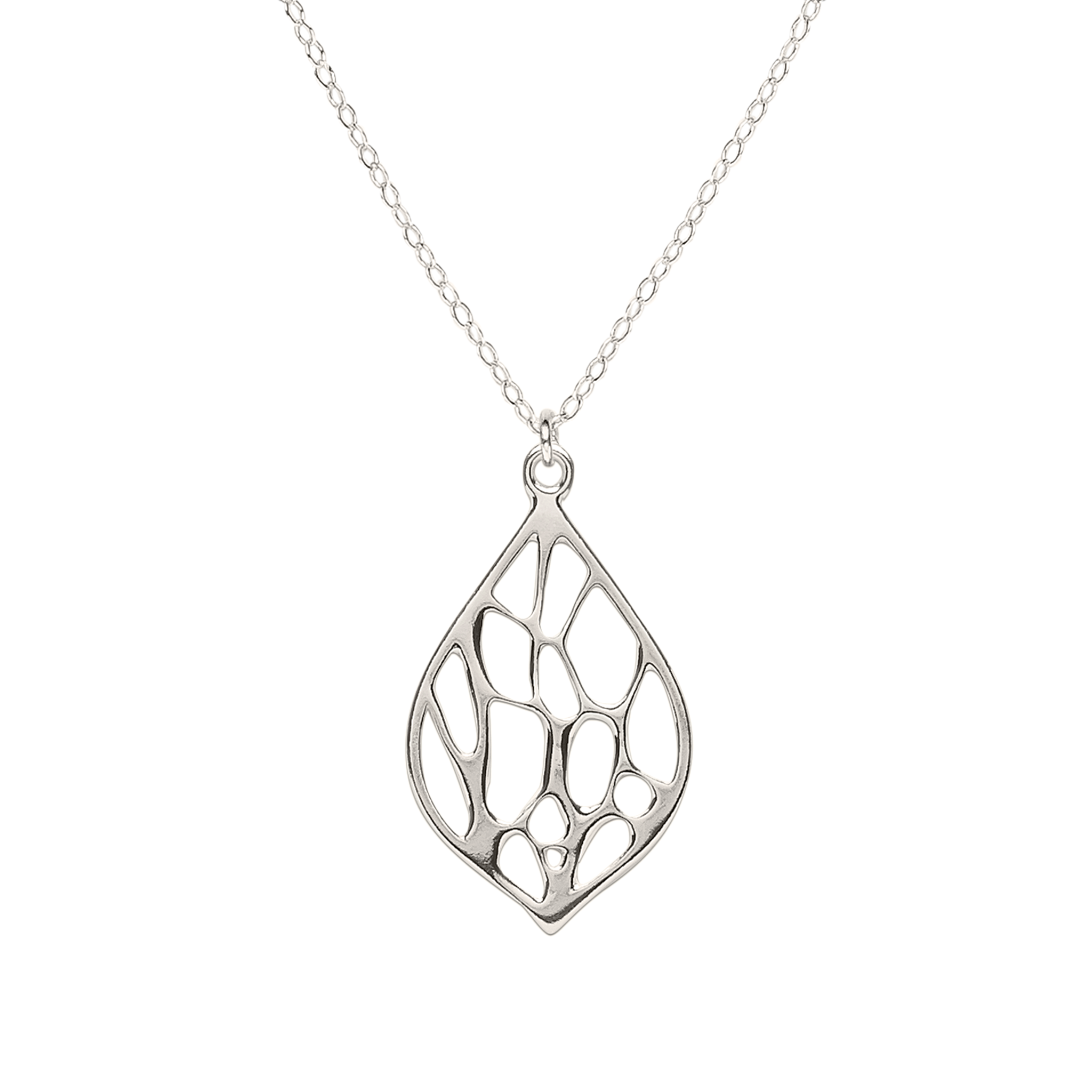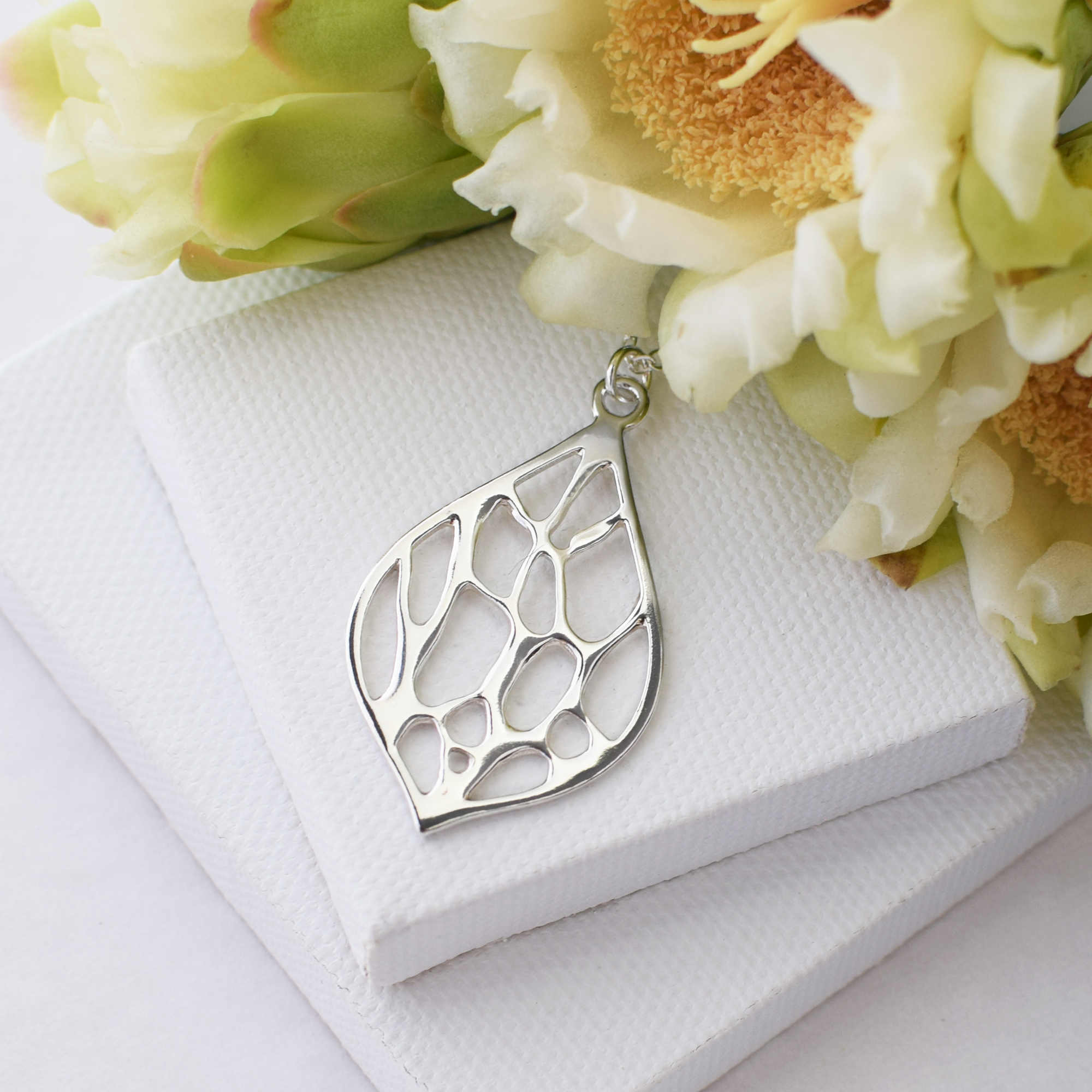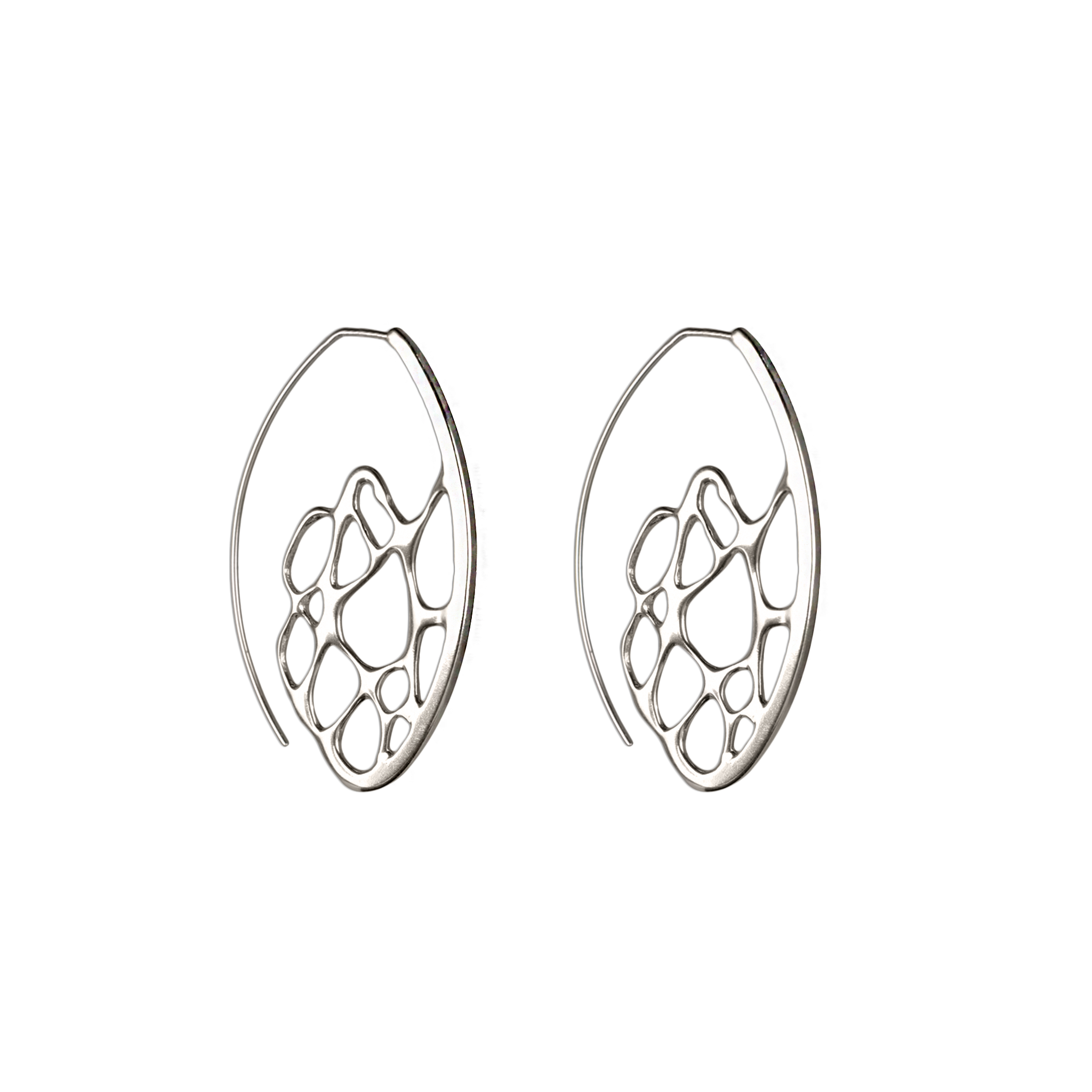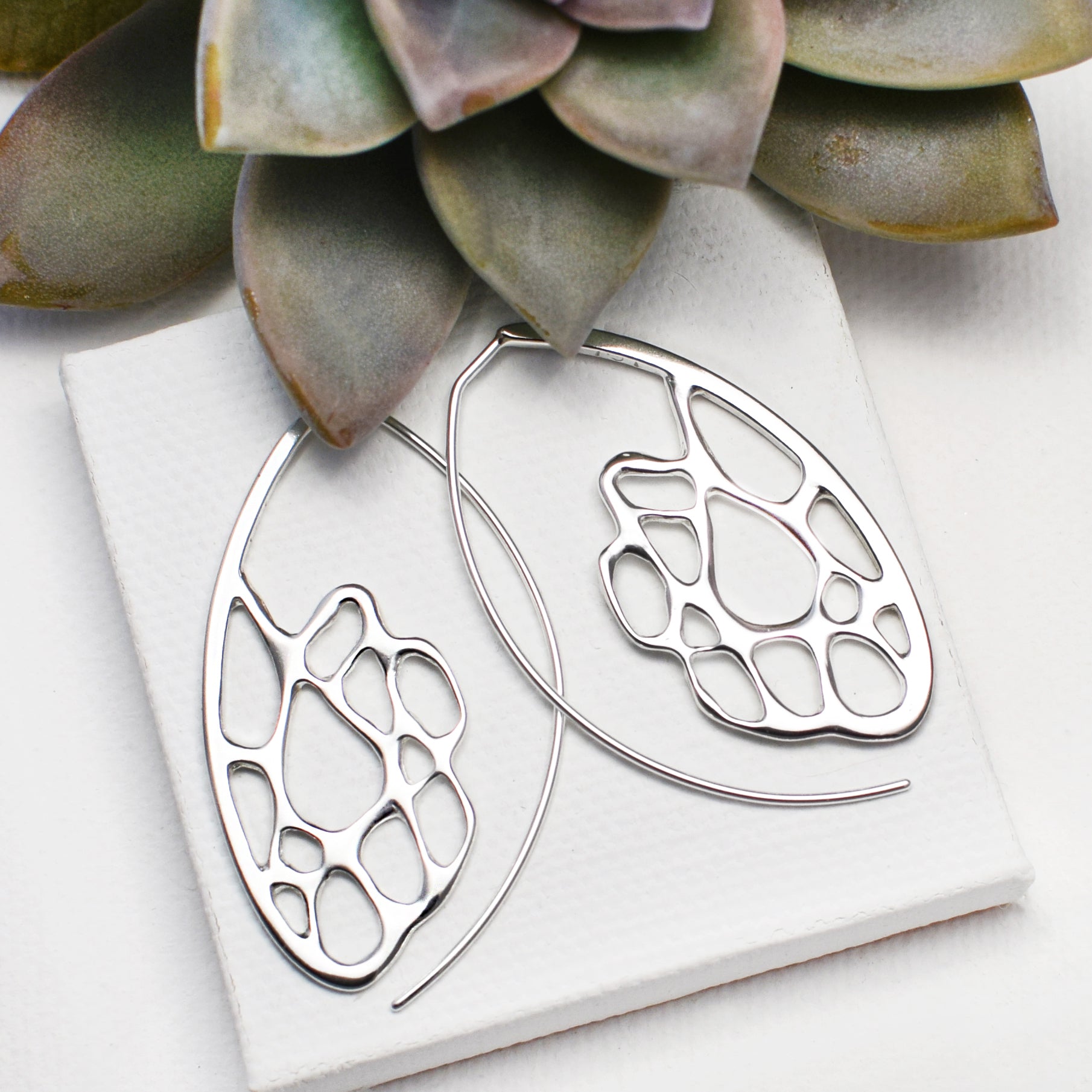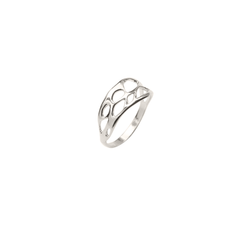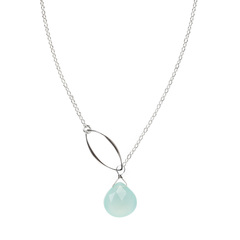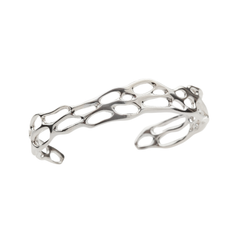One of the questions I'm frequently asked is: "How do you make jewelry out of prickly pear cactus?"
The process I use is lost wax casting. It’s a time-honored jewelry-making technique that I have known about and felt connected to my entire life. My father made several pieces of jewelry using the process - most memorably, my mother’s wedding ring. So it’s a technique near and dear to me.
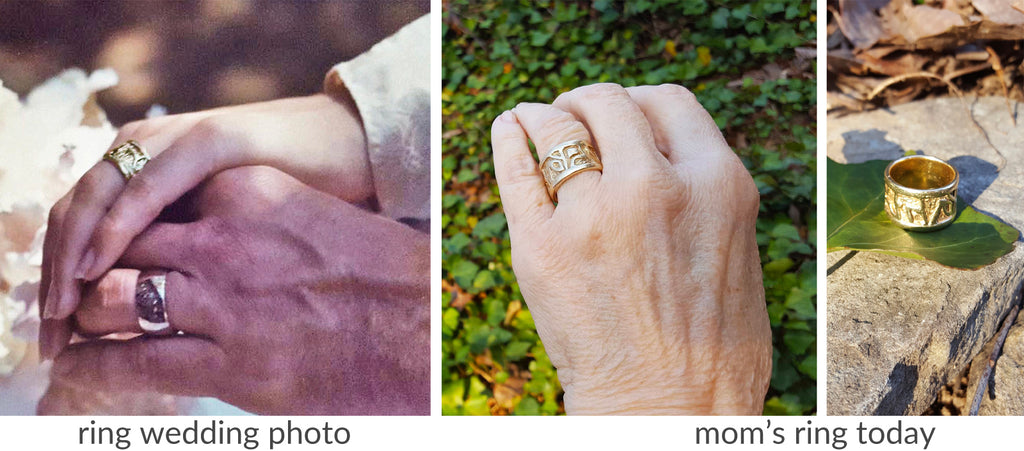
So how do I get jewelry from the cactus skeleton? A simplified version of the process is:
- I make a mold of a piece of prickly pear cactus skeleton, then remove the skeleton.
- Pour molten sterling silver into the mold, let it cool.
- Polish the resulting piece of silver into the finished piece of jewelry that is an exact replica of the cactus skeleton.
Many are curious how the process of lost-wax casting began. It actually has a long history with ancient origins. In fact, some of the earliest examples of lost-wax castings are of Mesopotamian copper animals mounted on carved-stone, cylinder seals. These figures date as far back as 3,500 B.C. Castings have also been found from Antioch (ancient Syria) and Anatolia (ancient Turkey) to Greece, Egypt, and Asia.
Skipping ahead thousands of years, the first detailed mention of the lost-wax casting process came from medieval writer and presumed Benedictine monk, Theophillus Presbyter, around 1,100 A.D. His writings documented and exposed the step-by-step process of lost-wax casting to the masses.
In recent history, dentists have adopted the process for making inlays and crowns, and many industries use it for tools, parts, and much more. And, of course, it is still a common way to make jewelry and art.
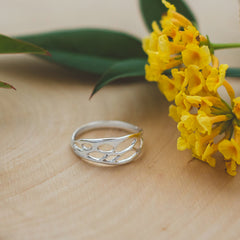
Isn’t it incredible that a technique as meticulous and age-old as lost-wax casting is still in practice today? I believe that is a true testament to the enduring quality of the process.
I knew that I would incorporate lost-wax casting into my jewelry making process. The fact that much of my design aesthetic honors nature and its botanical motifs has made the use of this technique that much more intuitive. See the botanical jewelry that I make with lost wax casting at Lila Clare's Botanic Collection.
